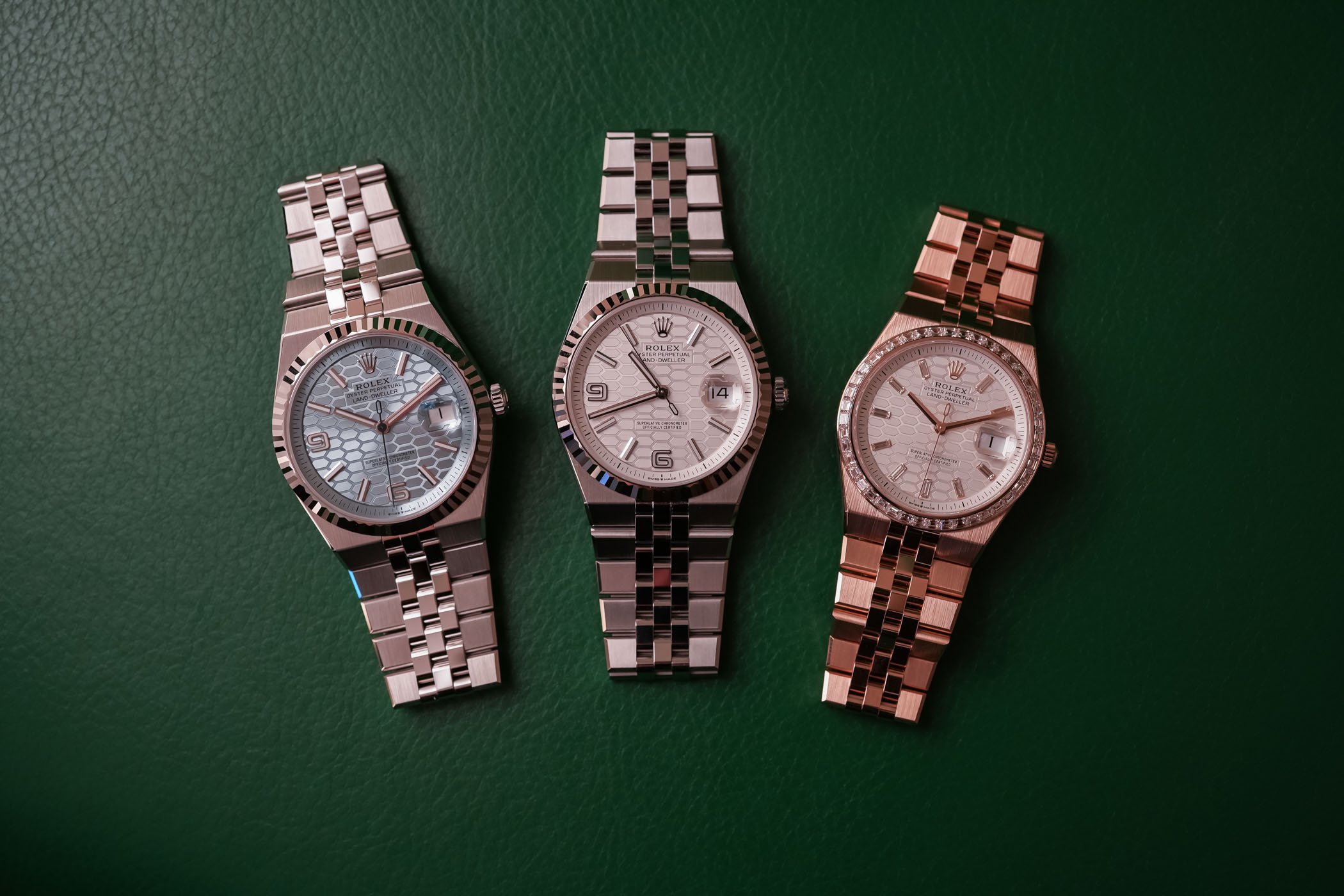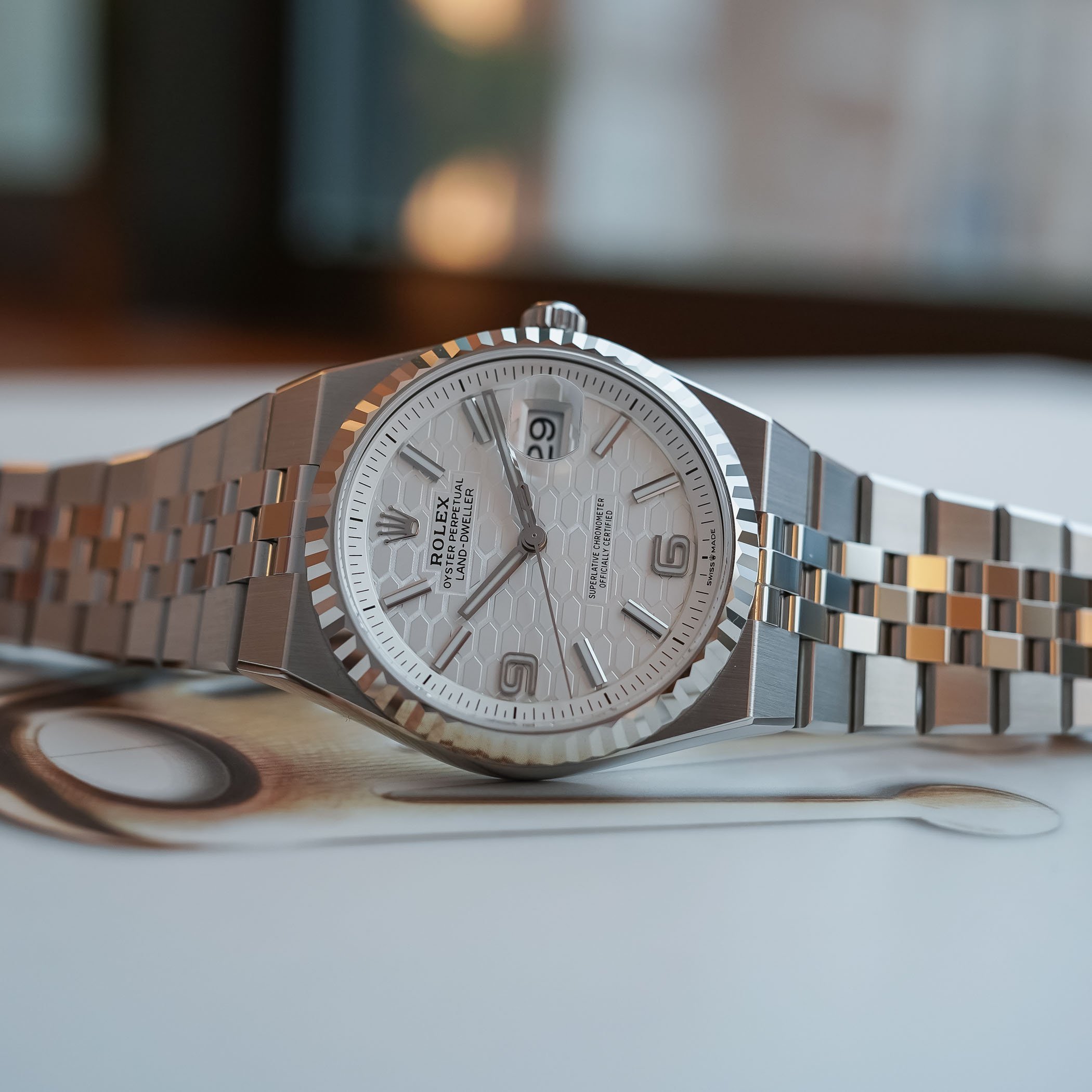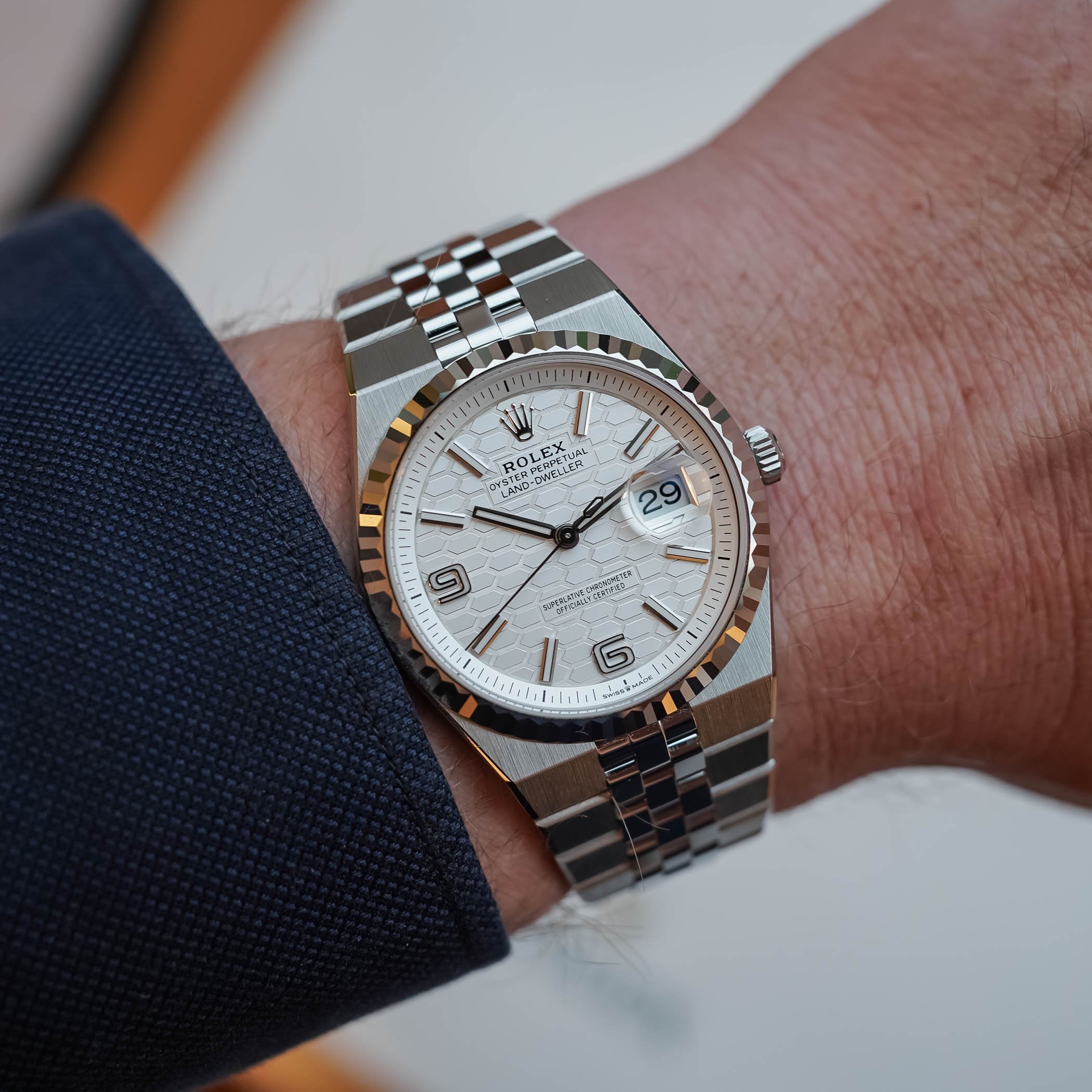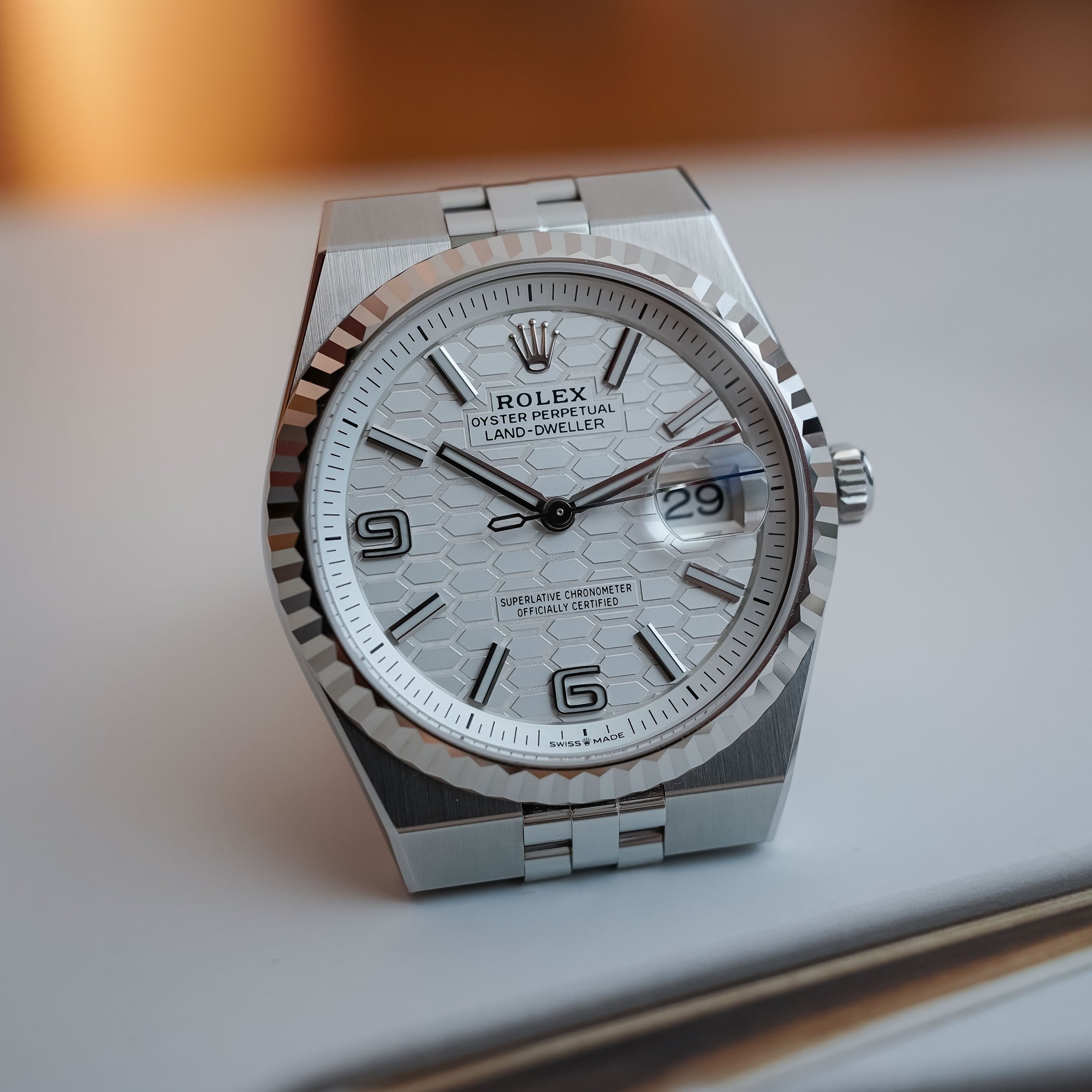From now on, you will surely know everything there is about the latest Rolex collection, a watch that made great noise during your presentation at Watches & Wonders 2025, the country resident. The collection was both visually and mechanically (mostly mechanically) a fairly hot discussion topic with shared opinions in the Watch community. We spoke in detail about the clock and also explained their innovative inhibition. Now is not the time to completely rewrite the story. Now the time for me is to be personal, subjective (and maybe unpopular). But I believe that the 36 mm version of Rolex country residents is the one for which they choose. And yes, you must not agree.
Rolex's latest creation is a watch that is completely new and at the same time very familiar. What else you can expect from Rolex, a watchmaker company that was known for its extreme conservatism, even though the recent years have shown that the crown has changed. Rolex is more creative in some areas, less expected and far more brave. Certainly the most emblematic models remain as timeless as possible-a explorer or a submarine are as classic as possible, but even in normally rather traditional areas such as the GMT Master II or the Auster-Perpetual, Rolex has shown a certain creativity.

 40 mm platinum – 40 mm oystersteel – 36 mm Everose gold with diamonds
40 mm platinum – 40 mm oystersteel – 36 mm Everose gold with diamonds
Rolex enters the coveted category of the elegant sports watch with an integrated bracelet with the country resident. Or more precisely, it enters the category again. As we explained in this article, the country dweller does not come out of the blue and is strongly inspired by watches of the 1970s such as the Datejust Reference 1630 and Oysterquartz. What is also is that at first glance I did not personally add up. When the clock was introduced on April 1, 2025 exactly at midnight, we only had to hand in our own judgment, the official renderings that we know were quite misleading. At first I thought the watch was missing the refinement of some of their potential competitors. Sure, the collection is not positioned as an alternative to the Royal Oak Jumbo or the Nautilus, both more expensive and thinner, but it remains a high-end clock that is on the other side between the date on one side and the daily and Sky Dweller.


Potential alternatives, watches in the same category and in an identical price range are the IWC engineer, the Chopard Alpine Eagle or the GP -Laaureato. Then you realize that the country resident actually has some serious arguments. But that's not the point of this article. As I said, it wasn't love at first glance for me. Perhaps it is the fact that we are used to seeing a Rolex with classic tabs and an oyster or anniversary bracelet. Perhaps it is the fact that the 3D renderings emphasized all textures and made the watch look more polarizing than what it really is. Perhaps it is the fact that most of the campaign focused on the 40 -mm edition.
A few hours after the first presentation, the Monochrome Team had the chance to practice practically with the collection. However, remember that a meeting at Watches & Wunder takes about an hour in which we can see all new models. Not the most ideal way of assessing a watch, they admit. On the other hand, we have the opportunity to take pictures for the three models, two of them were 40 -mm editions (steel and platinum), and the third was an ever golden version with diamonds. However, we recently had the opportunity to spend more time with the entire collection, including identical versions of the watch in 36 mm and 40 mm.
Now I have to admit that I start to warm up on the clock. Actually quite a lot. It took me some time to get used to it, and now I have to add the fact that it even reinforced my opinion. Yes, I have to say it is the most compact version I would choose. Why? Several reasons that all have to do with size and proportions as well as elegance.
The not so perfect (for me) 40 mm edition
But first, let me tell you why I would not choose the 40 -mm version. This is also all personal; One of the handles that I expressed in my review of the entire collection here was the fact that this watch contains many textures. It combines a complex bracelet with several links, a corrugated bezel with fewer flutes than normally on a DD or DJ (60 vs. 72 flutes that makes it bigger) and a dial with a lot of lot: a honeycomb pattern, a fine guilloche texture between the combs, a graduate-berry marker marker. A fairly large clock of 40 mm and achieves a striking result.

 The 40 -mm -Oystersteel edition on my 16.5 cm handle
The 40 -mm -Oystersteel edition on my 16.5 cm handle
Second, 40 mm is usually the standard at Rolex for men's watches (Submariner, GMT-Master II, Daytona, Day Date). And in most watches, this diameter works perfectly, except in Explorer 1, where the 36 mm seems more appropriate. Despite a short L2L measurement on my wrist, the watch felt quite “present” with the country resident. This can be attributed to the tonneau form of the housing, the addition of a certain surface or to the combination with an integrated bracelet. My last comment has to do with comfort and I share with my colleague Robin. Something that often happens to me with watches in this category (Royal Oak 41mm, PRX 40 mm): there is a gap between my wrist and the place where the housing and the bracelet connect. I thought it had to do with the fact that I had small wrists (16.5 cm), but Robin, who is far from being short (over 2 meters high and with 18 cm), also had an identical problem (less than me to be fair). Below a comparison of both watches on the wrist of our editor Robin – 40 mm left, 36 mm on the right.
The attraction of the 36 mm country dweller
After the 36 mm country dweller in mind, he felt like another experience. If you see the two sizes of this watch together, you may have the idea that the 36mm petite may feel too sensitive and to a certain extent, maybe a bit female. However, this changed when Robin and I tried it on the wrist. As surprisingly it may sound, this compact watch fits wonderfully on its wrist, and you can see it here because it is the only modeling in the wristid pictures. And remember that even in our team everyone does not agree. Our founder Frank prefers the 40 -mm edition and he had no problem with regard to comfort.


Let me put it into words. One, the 36 mm resident is basically a shrunk version of the 40 mm in every single aspect. This has several consequences, the first being the visual presence of all textures. For example, while the bezel keeps its 60 flutes, its thickness is reduced and the width of the flutes is reduced accordingly, which makes it less obvious. Second, the same applies to the dial. There are so many combs and the texture is identical, which is less noticeable. And this has to be combined with the reduced size of all elements of the dial: hands, markings, prints, width of the inner flange. Overall, there is more balance and refinement in this version, which still maintains the same thickness of 9.70 mm, but a length of 43.5 mm.

 The 36 -mm outer steel from Robin (18 cm wrist) worn
The 36 -mm outer steel from Robin (18 cm wrist) worn
Next: comfort and size. Some could argue that 36 mm are too small for a man. I am not here to debate your preferences. I agree that some watches in larger sizes work best. Nevertheless, the rural resident gave me the same impression as a discoverer 1; The 36 mm feels more appropriate than the 40 mm, at least in my eyes. The country resident is finally a watch with a more elegant calling than a submarine. On Robin's wrist, and as you can guess on my small wrist, the clock does something that we somehow forgot … The bracelet rolls around the wrist nicely. How often do we see clocks where the bracelet falls directly to the top of the tabs? Not here and it also means that the gap has disappeared under the case.
Overall, the 36 -mm diameter was advantageous for both comfort and style -at least for me. Due to a dial that feels more appropriate, there is more visual balance with less empty rooms, but also fewer disturbances due to the multitude of textures. It just feels a bit right. And as a more versatile option than everything you can find from the professional line, the 36 -mm -aisle has more refinement and more discretion. I just prefer it to the 40 mm version so that more of the classic Rolex proportions of the old school (PS. My choice of a 36 mm version via a 40 mm model would also be the case for a day of the day).


Last but not least, and it is more of a bonus for the 36 mm land inhabitant than a deal breaker against the 40 mm output. I like the fact that both sizes use exactly the same movement, which means that the 36 mm output is equipped with the beautiful effect of a caliber that fills the case. It is also pleasant to see a large movement in a compact watch without a huge metal ring around you.

 The caliber 7135 fills the fallback of the 36 -mm output generously
The caliber 7135 fills the fallback of the 36 -mm output generously
Does this mean that everything is perfect in the 36 mm Rolex country resident? No. I would like to see what this watch looks like with a darker dial (dark blue, anthracite gray), since the white dial is not the most attractive to me. I would also like to see a version with a smooth bezel. Maybe it looks terrible, maybe not. I think we have to wait for our annual Rolex forecasts to see what it could look like.

 The 36 mm Everose with diamonds on the wrist
The 36 mm Everose with diamonds on the wrist
First of all, let us know in the comments what version you believe that you are the best for this new Rolex Land-Dweller collection. As you understand, my choice is the 36 -mm edition. And I think I will not be the only one, not only because of the trend for smaller watches, but also because this LD actually looks very good in this smaller size. Of course for everyone.
https://monochrome-watches.com/why-woild-choose-36mm-rolex-land-dweller-oBMM-Version-persal-review/